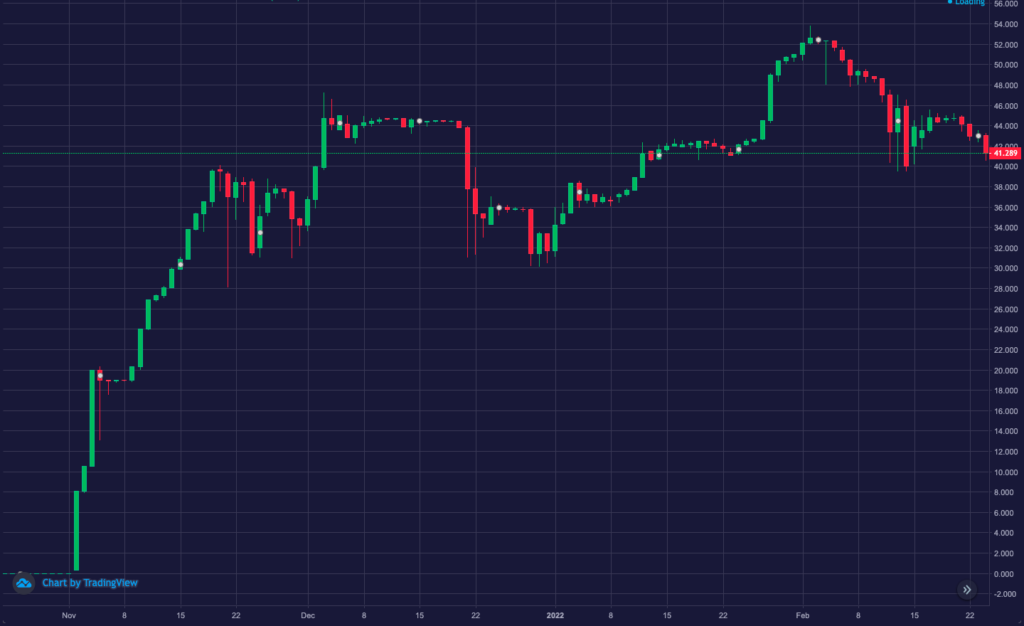‘Billionaire’ crypto founder bankrupt 4 months after cigar-laced promo vid

Guo Wengui, the exiled Chinese “billionaire” founder of peculiar crypto project Himalaya Coin (HCOIN), has declared personal bankruptcy.
The move was made in response to a dispute over a $28-million luxury yacht which he claims he doesn’t own — the one on which his business partner Steve Bannon was arrested on fraud charges in 2020.
A state judge had ordered Guo to pay $134 million in fines over the yacht, Lady May, which Guo had kept in American waters despite owing up to $500 million to 99 creditors, according to his bankruptcy filing.
Without listing any crypto, Guo reported owning assets worth between $50,001 and $100,000, far below his monumental debts (hence the bankruptcy).
And it was only three months ago that Guo released “HCoin to the Moon,” a promo video featuring the entrepreneur smoking cigars and stepping out of luxury sports cars.
Bloomberg profiled Guo’s HCOIN in November, when it traded at a $27-billion market capitalization — albeit only via the founder’s own crypto trading platform, Himalaya Exchange.
Guo sold unregistered crypto securities before bankruptcy
Legal problems drove Wengui out of China in 2014, where he’s wanted on allegations of fraud, kidnapping, money laundering, and bribery.
Since then, Guo has claimed to be a political activist and whistleblower. He previously bought an apartment in New York and joined Donald Trump’s Mar-a-Lago as a member.
Guo also invested in conservative social media app Gettr, which launched last year.
Indeed, he’s co-ordinated with agent provocateur Bannon on various China-themed projects. Perhaps the most outlandish is the “New Federal State of China,” a group formed to overthrow the Chinese Communist Party in 2020.
In his Chapter 11 bankruptcy filing, Guo cited a court ruling requiring him to repay $254 million worth of debt to Cayman Islands-based Pacific Alliance Asia Opportunity Fund.
Guo had been sued for borrowing $88 million and never paying it back.
There’s also a $134 million fine for violating a court order requiring him to keep his yacht within the court’s jurisdiction.
Guo’s liabilities even include $21 million owed to a company called Golden Spring New York, whose owner Sasha Gong reiterated that Guo is pursuing bankruptcy to “avoid lots of debt.”
Himalaya Coin only trades on Guo’s exchange
As for Guo’s crypto exploits, the US Securities and Exchange Commission ordered his media companies (founded alongside Bannon) to pay a pearl-clutching $539 million settlement over unregistered securities sales.
One of the securities in question was a cryptocurrency tied to GTV Media Group, referred to as “G-Coins” and “G-Dollars,” noted CNBC.
All that happened last September. Two months later, Guo was back touting Himalaya Coin in a flashy music video featuring stereotypical opulence.
Still, the music video listed the promised benefits of Himalaya Coin and its related stablecoin, Himalayan Dollar. It claims Himalayan Dollar is pegged to the US dollar and that Himalayan Coin is 20% backed by gold reserves.
Guo’s tokens only trade on his tightly controlled Himalayan Exchange, which exclusively lists the two tokens in his ecosystem and nothing else.
That ecosystem includes Himalaya Pay, an app available on Google Play and Apple’s App Store.

Read more: [Bannon’s anti-Biden crypto has backdoor that can stop MAGA fans from selling]
Binance-owned CoinMarketCap never chose to list Himalaya Coin due to its few exchange listings and, therefore, high susceptibility to price manipulation.
Crypto traders on Himalaya Exchange have curiously maintained Himalayan Coin’s price despite news of Guo’s bankruptcy.
Although, HCOIN has today slipped 6%, following the lead of Bitcoin and the wider crypto markets.
Follow us on Twitter for more informed news.
